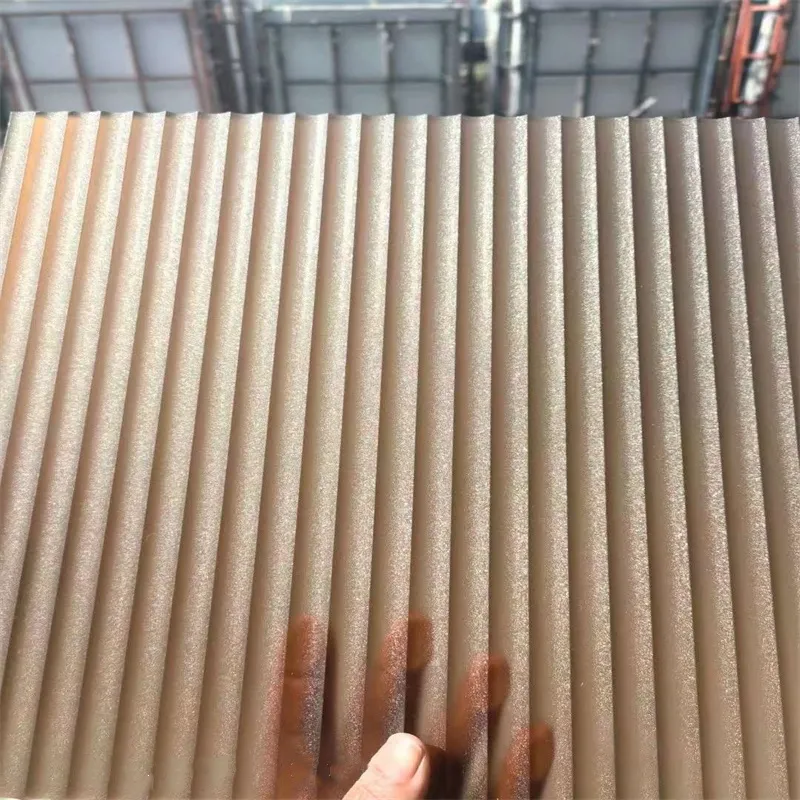Nov . 07, 2024 23:14 Back to list
Innovative Coatings for Enhanced Light Reflection on Glass Surfaces
The Importance of Glass Reflective Coating in Modern Architecture
In recent years, glass has become an essential material in modern architecture, providing aesthetics, functionality, and energy efficiency. One of the key advancements in glass technology is the development of glass reflective coating. This innovation not only enhances the visual appeal of buildings but also contributes significantly to energy conservation and environmental sustainability. In this article, we will explore what glass reflective coating is, its benefits, and its applications in contemporary architecture.
Understanding Glass Reflective Coating
Glass reflective coating is a specialized finish applied to glass surfaces. Typically composed of metallic oxides, these coatings are engineered to reflect certain wavelengths of light while allowing others to pass through. This unique property creates a balance between natural light and temperature control and enhances privacy without sacrificing visibility. There are two main types of reflective coatings sputtered and pyrolytic, each varying in thickness, reflection properties, and durability.
Sputtered coatings are generally more efficient at reflecting solar radiation, making them ideal for buildings located in sunny regions. Pyrolytic coatings, on the other hand, are baked onto the glass during manufacturing, resulting in a more durable option suitable for harsh weather conditions. The choice between the two often depends on specific architectural requirements and environmental conditions.
Benefits of Glass Reflective Coating
1. Energy Efficiency One of the most significant advantages of glass reflective coating is its ability to enhance energy efficiency. By reflecting solar radiation, these coatings help to reduce the heat absorbed by the building. As a result, less energy is needed for cooling systems, leading to lower energy bills and a reduced carbon footprint.
2. Enhanced Comfort Buildings fitted with reflective coated glass maintain a more consistent indoor temperature. This comfort is crucial not only for occupants but also for preserving the integrity of sensitive materials or equipment. Furthermore, it minimizes glare from direct sunlight, creating a more pleasant working and living environment.
glass reflective coating

3. Aesthetic Appeal Reflective glass provides a sleek, modern look that can elevate the visual design of any building. Architects can use varying degrees of reflectivity and tint to create striking facades that dynamically interact with light, contributing to the overall aesthetic of urban landscapes while ensuring privacy.
4. UV Protection Many glass reflective coatings offer ultraviolet (UV) protection, shielding interior furnishings from sun damage. This protection can prolong the life of carpets, upholstery, and artwork, making reflective glass an attractive option for both commercial and residential spaces.
5. Cost-Effectiveness Though the initial investment in glass reflective coating can be higher than standard glass, the long-term energy savings and reduction in maintenance costs often make it a wise financial decision. Additionally, in many regions, energy-efficient buildings may qualify for tax incentives or rebates.
Applications of Glass Reflective Coating
The versatility of glass reflective coatings allows for diverse applications across various sectors. In commercial architecture, office buildings often feature large glass exteriors equipped with reflective coatings to reduce sun glare while enhancing the visual appeal. Shopping malls utilize these coatings to create inviting environments that also save energy costs.
In residential construction, homeowners increasingly favor reflective glass for their windows and patio doors. The enhanced aesthetics, coupled with energy savings, make these coated options highly desirable. Additionally, reflective glass is widely utilized in skyscrapers, where it not only minimizes solar heat gain but also contributes to a building's iconic silhouette against the skyline.
Conclusion
Glass reflective coating represents a significant advancement in architectural design and building technology. By combining energy efficiency, aesthetic flexibility, and durability, this innovative solution addresses the growing demand for sustainable construction practices. As we continue to grapple with climate change and energy consumption, embracing technologies like glass reflective coating will be crucial in creating environmentally friendly, visually appealing spaces. The future of architecture lies not only in the materials we choose but also in how we leverage technology to create a harmonious balance between nature, energy, and design.
-
Safety and Style with Premium Laminated Glass Solutions
NewsJun.24,2025
-
Reinvents Security with Premium Wired Glass
NewsJun.24,2025
-
Premium Float Glass Line for Modern Architecture
NewsJun.24,2025
-
Low Emissivity Glass for Energy-Efficient Architecture
NewsJun.24,2025
-
High-Performance Insulated Glass Solutions for Modern Architecture
NewsJun.24,2025
-
Elevates Interior Style with Premium Silver Mirror
NewsJun.24,2025
Related PRODUCTS














